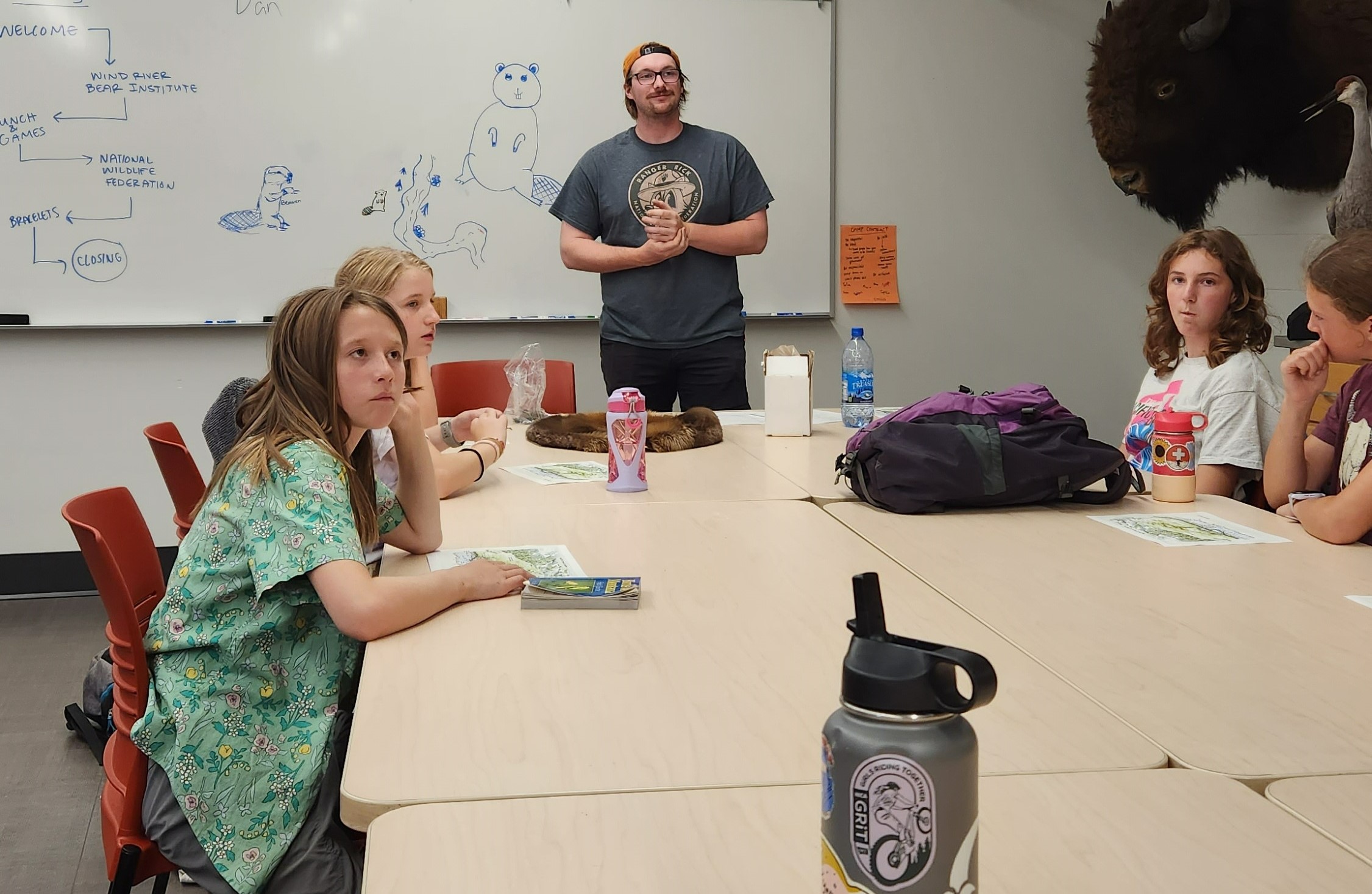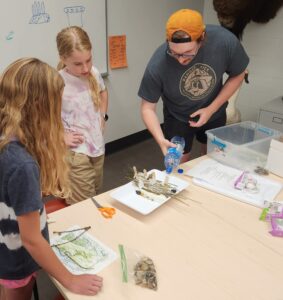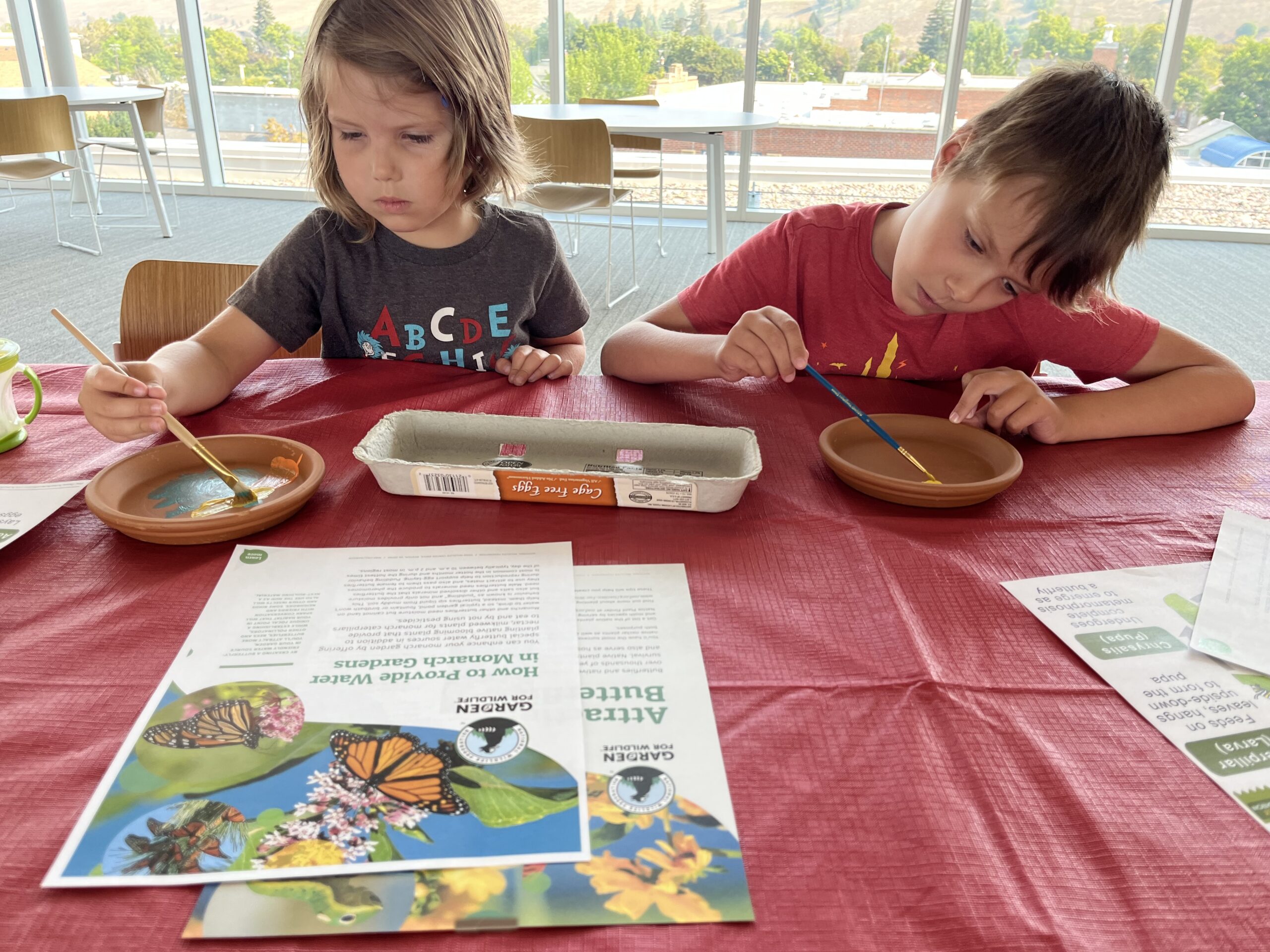We have much more to do and your continued support is needed now more than ever.
Young Conservationists in Big Sky

The National Wildlife Federation’s Montana Garden for Wildlife Coordinator and AmeriCorps member Dan French has many responsibilities and opportunities to impact the Missoula community and surrounding valleys. The Garden for Wildlife™ Coordinator focuses on outreach and education as a part of Montana’s Big Sky Watershed Corps (BSWC). Members of BSWC are dedicated to improving the waters of Montana through process-based restoration, as well as community outreach and education.
Throughout the year, Dan focuses on outreach opportunities with Missoula area events, such as Missoula’s Home and Garden Show, the International Wildlife Film Festival (which you can read about here), farmers markets, and youth festivals. During this time, our Montana Education Manager, Naomi Alhadeff, also hosted Project WET and Project WILD workshops, gaining Dan access to these national curricula resources as well as preparing him to use them in future classrooms.

That’s when the fun started. With the beginning of the 2023/24 school year there were ample opportunities to flex these new educational tools and test their applications and limitations with different partners. An example of this collaborative opportunity was a recent series of camps hosted by the Montana Natural History Center here in Missoula for young women on topics of science, technology, engineering, environment, and math (STEEM). Dan and Naomi led these female conservationists in activities during Forestry and Wildlife weeks. During Forestry Week students identified native Montana trees and learned about dichotomous keys, sorting their shoes by sandal or sneaker, color scheme, brand, and number of straps. Then, they took a trip outside to the University of Montana’s arboretum and identified trees based on bark texture, color, and cone shape. Students collected cones and created bark rubbings from the newly identified trees. By the end, students left with a notebook full of bark rubbings and any needles or cones collected.

During Wildlife Week the lesson focused on the importance of American beaver (Castor canadensis), its role as a keystone species, and their importance in the Montana landscape. As a keystone species, beavers are vital to wetland health. Without beavers, Montana’s semi-dry climate leads to dry soils, more intense wildfires, and water resource stress. For the people who live here, this means the land doesn’t retain the water it needs while water rushes by in unimpeded streams and rivers. Students learned about low tech process based restoration (LTPBR), a conservation practice using natural materials, manual tools, and most importantly time, to bring back the natural function of the landscape. Beaver dam analogs are one example of how Montana Conservation Corps members and other conservation organizations attempt to repair and restore beaver habitat. Beaver dam analogs are a LTPBR that mimic real beaver dams by slowing down the flow of streams and spreading the water sideways and out into the surrounding landscape. Finally, students paired off and built their own model beaver dam analogs testing their strategies using sticks, clay, and stones.

We also work with local homeschooling groups like the Zootown Homeschooling Community, bringing the same science-based activities to non-traditional educational settings. Most recently, we met them at the Missoula Public Library to create butterfly puddlers for students to take home and install in their gardens. Students and parents alike learned about the Garden for Wildlife™ program and the five elements of wildlife habitat: food, water, cover, places to raise young, and sustainable gardening practices. Students learned about pollinators and how puddlers provide water and nutrients from mud placed in the puddlers. That’s two of the five elements the National Wildlife Federation looks for when certifying habitats! Kids painted their puddlers in all sorts of bright and colorful ways to attract butterflies to their gardens before taking them home. Along with their puddlers, they also took home tip sheets about providing water in butterfly gardens and attracting butterflies. These puddlers help provide an essential element for butterflies, like the Monarch butterfly, but also Montana’s own state butterfly, the Mourning Cloak.
The benefits of camps and activities like these go beyond the facts learned. These are fun opportunities that inspire the next generation of conservationists, biologists, botanists, or AmeriCorps members. We get to bring big ideas and topics to a small classroom setting, and make them understandable. They learned of one ways scientists organize species during Forestry Week by building their dichotomous key. Some campers touched a beaver pelt for the first time during Wildlife Week. Homemade arts and crafts are added to gardens to help butterflies instead of on the fridge. These moments seem small for us now, but when thinking back on our own childhoods, they are often the moments that stand out.




















